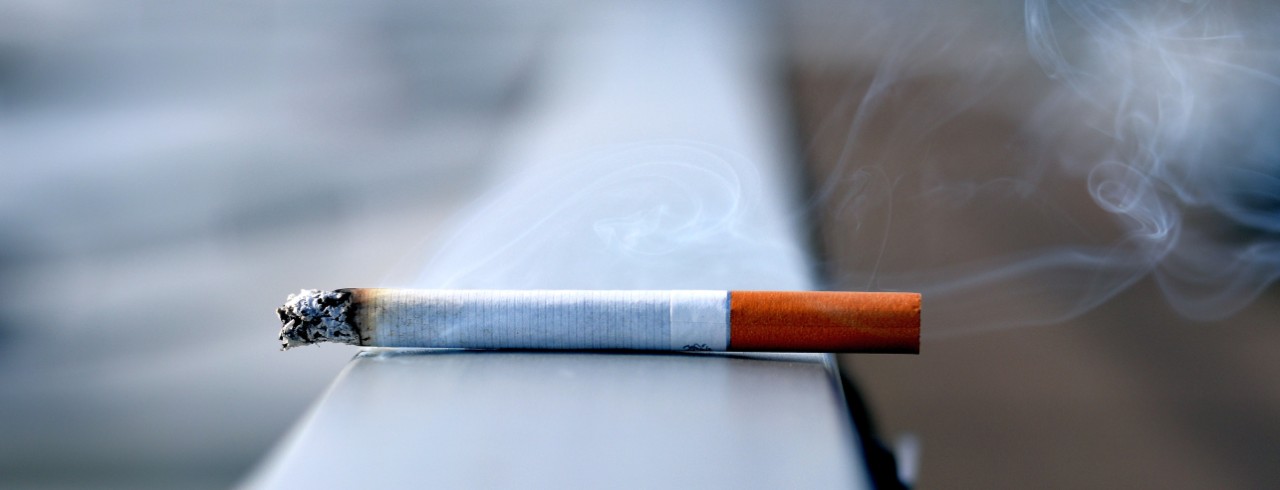
Researchers find thirdhand smoke lingers on tiny hands
New study finds tobacco particles on the hands of children, even those in non-smoking households
Toxic secondhand tobacco smoke residue, commonly referred to as thirdhand smoke, is a pervasive pollutant that especially affects children living in lower-income households.
In a new study, published in JAMA Network Open, researchers found that 97% of 504 children sampled had some level of nicotine present on their hands; more than 95% of children in nonsmoking households with home smoking bans still had nicotine on their hands.
The study is featured on WVXU and in multiple media outlets, including The Atlanta-Journal Constitution.

Ashley Merianos is an associate professor of human services, in UC's College of Education, Criminal Justice and Human Services. Her research focus is tobacco use. Photo/UC Creative + Brand.
“Remediation practices are highly encouraged to protect all children from exposure to thirdhand smoke,” says study co-author Ashley Merianos, a UC associate professor of human services and a prolific researcher in the field of tobacco use and exposure.
The study, led by Melinda Mahabee-Gittens, a pediatric emergency physician and Cincinnati Children’s Hospital Medical Center researcher, also found that children in the lowest income families (where parents made less than $15,000) had higher levels of nicotine particles on their hands, totaling 14 nanograms per wipe in nonsmoking homes. This compares to less than 3 nanograms per wipe from the highest income homes (above $120,000).
Children of Black parents had higher amounts of nicotine on their hands than children of white or multiracial parents.
Parental protections like home and car smoking bans dramatically reduced the amount of nicotine detected on these children’s hands, according to co-author Georg Matt, a professor of psychology at San Diego State University and director of the Thirdhand Smoke Resource Center.
Merianos says that even children living in nonsmoking households may be unknowingly exposed to thirdhand smoke pollution because tobacco smoke can drift into their homes if tobacco is smoked outside near windows, doors or ventilation systems.
Some examples of prevention include weekly household cleaning and opening windows.
To learn more, read the entire WVXU interview.
See more tobacco research by Merianos covered by U.S. News.
Featured photo at top courtesy of Unsplash.
Impact Lives Here
The University of Cincinnati is leading public urban universities into a new era of innovation and impact. Our faculty, staff and students are saving lives, changing outcomes and bending the future in our city's direction. Next Lives Here.
Related Stories
We love ‘Lucy’ — the AI avatar redefining UC tech transfer
July 17, 2024
In a visionary leap at the University of Cincinnati, the marriage of artificial intelligence and interactive technology has birthed "Lucy," a Smarthelp AI avatar poised to revolutionize how regional industries engage with UC's tech transfer initiatives.
NIS program opens new horizons for international student
July 17, 2024
In his pursuit of physics and a taste for research, Akash Khanikor ventured from his hometown in India's Assam to the University of Cincinnati, drawn by the promise of hands-on exploration early in his undergraduate career as a NEXT Innovation Scholar.
Camp aims to empower children, teens who stutter
July 17, 2024
A one-week, evidence-based program for children and teens who stutter at the University of Cincinnati will teach kids to communicate effectively, advocate for themselves and develop confidence about their communication abilities. Camp Dream. Speak. Live., which is coming to Cincinnati for the first time July 22-26, began in 2014 at the University of Texas at Austin. The Arthur M. Blank Center for Stuttering Education and Research at UT expects to serve more than 2,000 children at camps across the United States, Africa, Asia and Europe this year.
